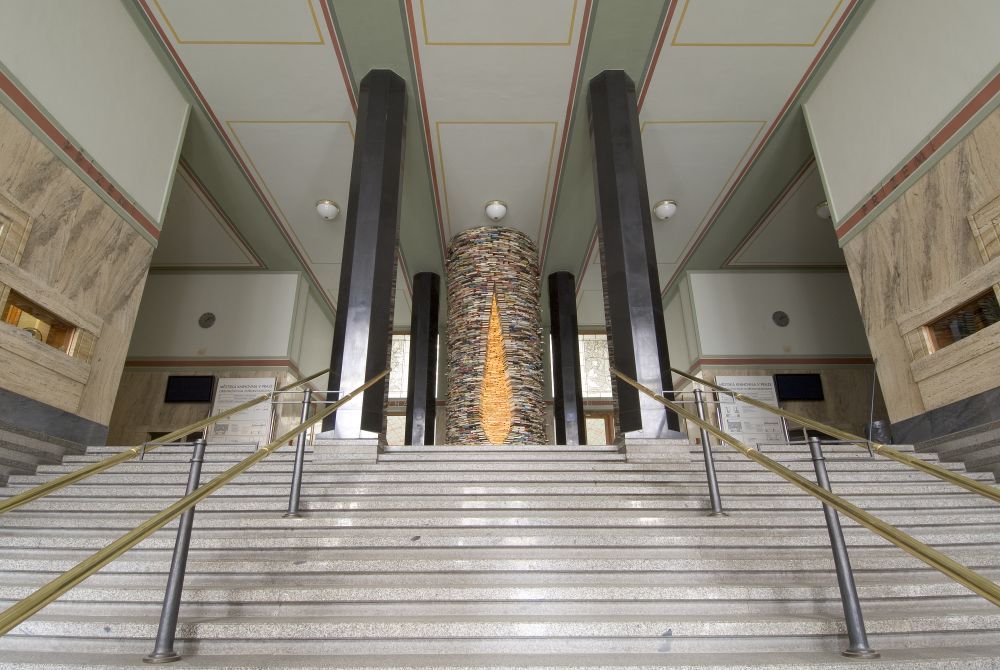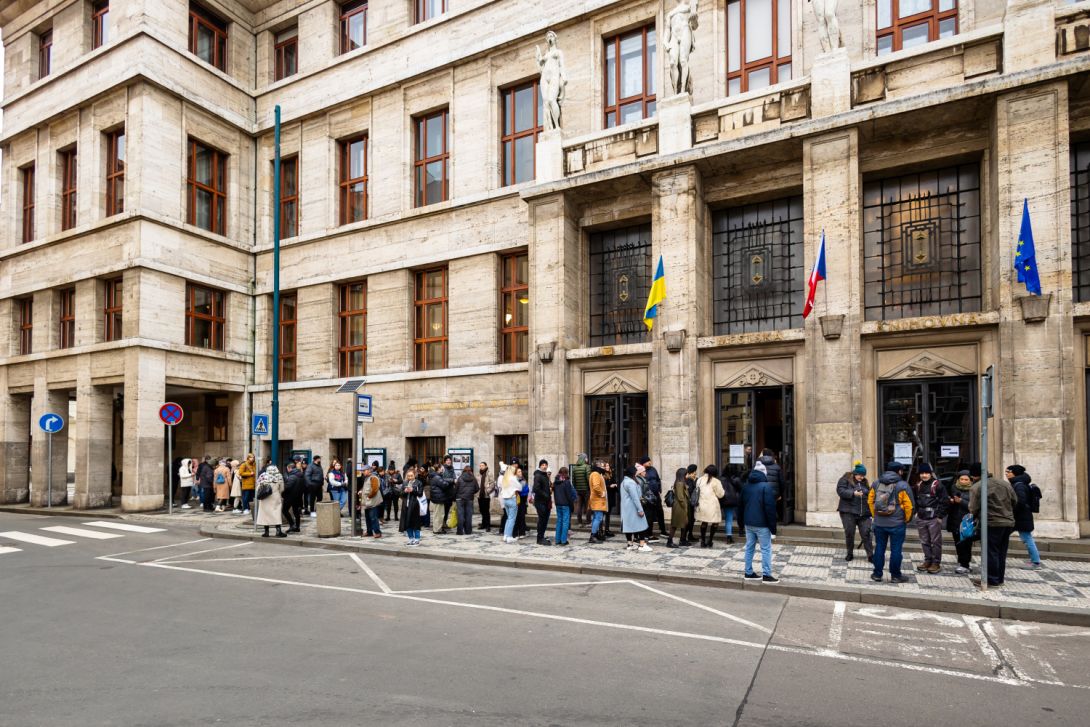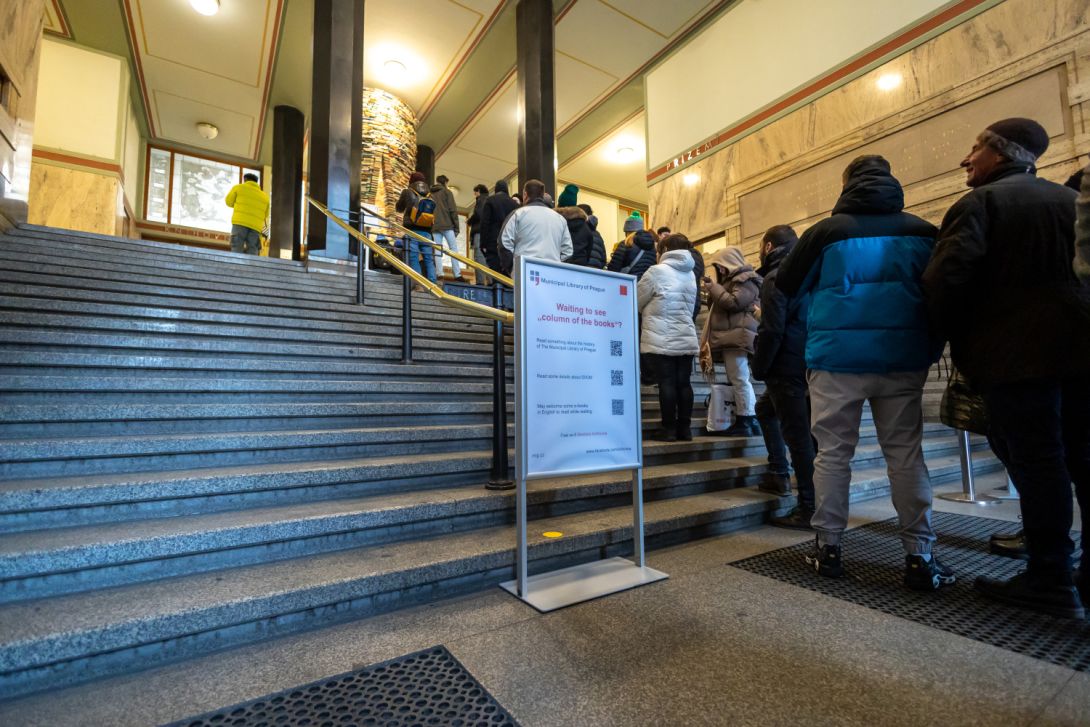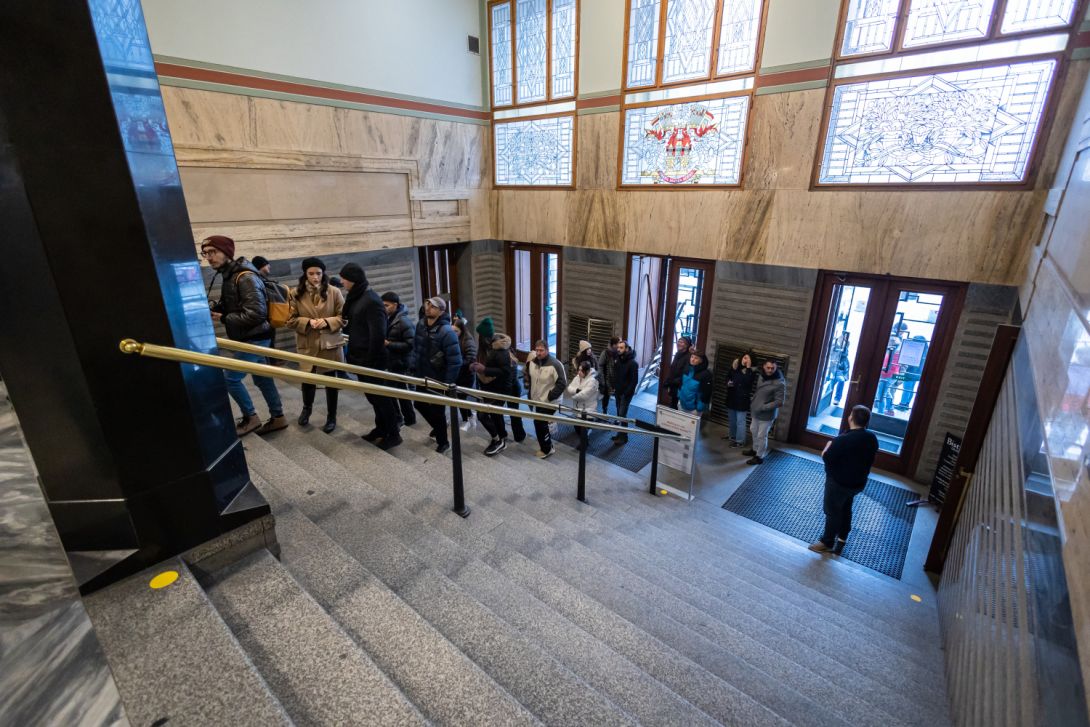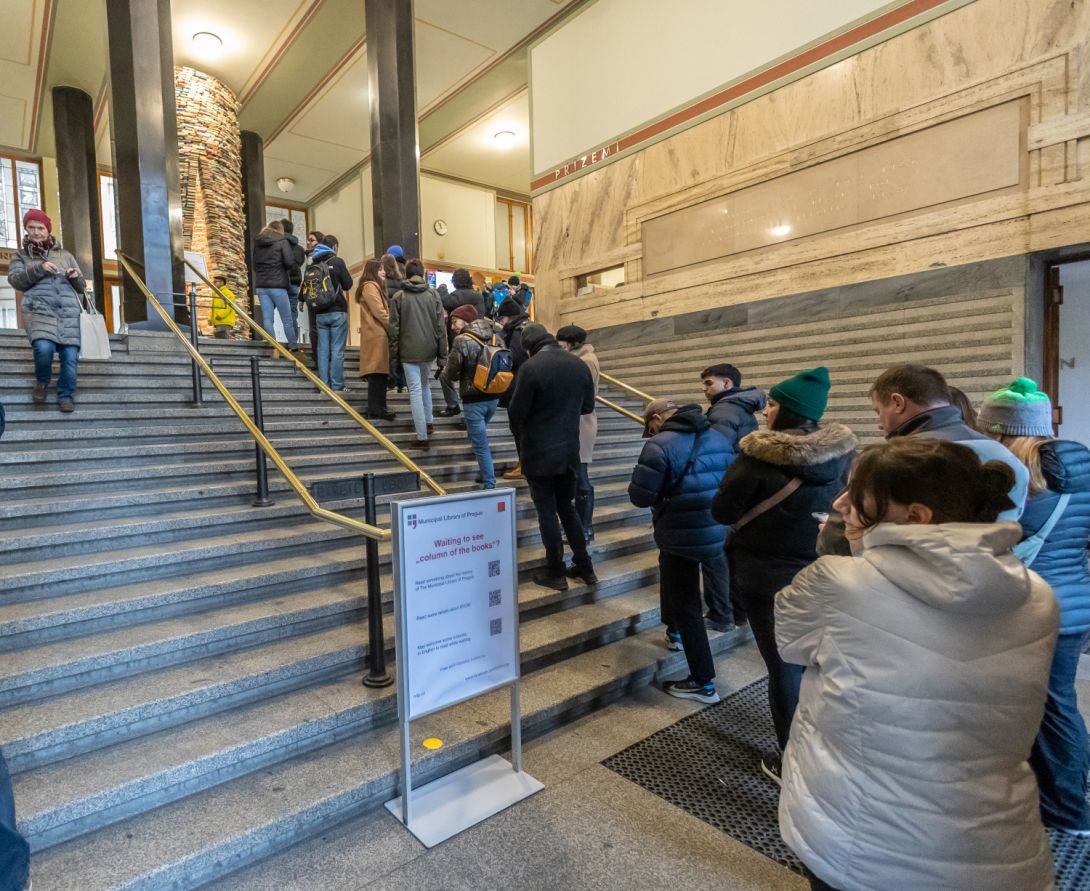Idiom

Idiom during Christmas
The Central Library will be closed on Wednesday, December 24, Thursday, December 25, and Friday, December 26, 2025. It will be open on Saturday, December 27, and Sunday, December 28, 2025, and will operate according to the Christmas schedule on other days. During the second week of Christmas, the Central Library will be closed on Wednesday, December 31, 2025, and Thursday, January 1, 2026. Idiom is accessible on days when the Central Library is open.
Opening hours during Christmas
Monday, December 22, 2025 Open
Tuesday, December 23, 2025 Open
Wednesday, December 24, 2025 Closed
Thursday, December 25, 2025 Closed
Friday, December 26, 2025 Closed
Saturday, December 27, 2025 Open (branches that are open on Saturdays)
Sunday, December 28, 2025 Closed / except for the Central Library (open)
Monday, December 29, 2025 Open
Tuesday, December 30, 2025 Open
Wednesday, December 31, 2025 Closed
Thursday, January 1, 2026 Closed
Friday, January 2, 2026 Open
Saturday, January 3, 2026 Open (branches that are open on Saturdays)
Enromous interest in Idiom
Please note that the interest in the Idiom Book Tower is enormous, and especially during the tourist season (Christmas, Easter, summer holidays) the waiting line may take two hours; in the lower period about thirty minutes. Thank you for respecting the librarians and other library staff.
Toilets for the public are in the basement of the building on the left side of the hall. The fee for use is CZK 10. Refreshments are offered by the Cafe in the left part of the building. The free Wi-Fi mestska_knihovna is available.
About Idiom
Idiom is an art installation of 8000 books. The author of Idiom is Slovak artist Matej Krén. It has been installed in the foyer of the Central Library on Mariánské náměstí since 1998. Photo of Idiom by Gabriel Urbánek.
Opening hours for visiting Idiom:
- Mondays 13:00 - 19:30
- Tuesday 9:00 - 19:30
- Wednesday 9:00 - 19:30
- Thursday 9:00 - 19:30
- Friday 9:00 - 19:30
- Saturday 10:00 - 17:30
- Sunday 10:00 - 17:30
The so-called Idiom, a column made of 8,000 books, has been present in the vestibule of the Central Library at Mariánské Square since 1998. The author of the Idiom, sometimes dubbed the “Column of Knowledge“, is the Slovak artist Matej Krén.
During the 18 years of its existence, the Idiom book tower has become an integral part of the hall of the Central Library, drawing the attention of tourists and locals alike. It has even made it into the Lonely Planet guide and has been reproduced on the cover of Science magazine.
The idiom is meant to symbolise the infinity of knowledge. You can get this feeling if you look inside through a special hole in the column made of hardback books. Inside there are two mirrors, one at the top and one at the bottom, which give the impression of infinity.
Idiom
A tall tower made of several thousand books, closed at the bottom and top by two mirrors, whose first project was created in 1991, combines the material mass of the material with the illusory infinity of the interior space. The idiom has been exhibited in many places in Europe and America.
In the Czech Republic, the column of books was first exhibited in the summer of 1996 at the Jiří Švestka Gallery in Prague, which was a communist warehouse of banned books in the 1950s. It was moved to the vestibule of the Central Library at Mariánské Square by Anna Bimková, then director of the Municipal Library in Prague, and has been permanently installed there since 1998.
A small publication was published on the occasion of the installation:
Kren, Matej. Idiom: Matej Kren. [Prague]: PosAm, 1998. [41] s. Gravity mixer Rotunda Gravity mixer was presented by M. Kren at the Czech Pavilion at EXPO 2000 in Hannover.
Born in Trenčín in 1958, he graduated from the Secondary School of Arts and Crafts in Bratislava and continued his studies at the Academy of Performing Arts in Bratislava and the Academy of Fine Arts in Prague. Already in his graduation year he received the Honor Award (1985) at the International Student Exhibition in Kobe, Japan. In 1986–88 he made an animated film at the Barrandov Brothers Film Studio, which was shown at international film festivals in Berlin, Paris, Trenčianske Teplice and Huesca, Spain, where he received the Danzate del Oro Grand Prize (1991).
Until 1989 he participated in many exhibitions such as Artprospekt, Artifact Shift, Terrain and others within the unofficial art scene. Since the early 1990s, he has exhibited at prestigious international art shows in major European and overseas capitals.
He has chosen books as the key material for his work. He uses them to compose installations that can hold thousands of them. They are like bricks to him, but they contain much more information, destinies, stories and knowledge. He puts them into the form of dwellings: primitive on the one hand, infinitely intelligent on the other. He ingeniously uses mirrors to evoke a sense of infinity.
Gravity mixer
The Gravity mixer rotunda was presented by M. Kren at the Czech Pavilion at EXPO 2000 in Hannover.
Passage
The „Passage“ project, created in 2004, represents a symbolic „shortcut across the worlds“ in which we exist or reside: through the factual, real world to the world of human culture, where reality is exchanged for another reality – virtual – the reality of the word, text, sign, symbol, image, and then back again.
The project itself is a metaphorical synthesis of several formal-meaning elements: the entrance, the sidewalk, the „endless walls“ of books, mirrors, light, exit, and even the physical presence of the audience itself. Here, the spectators are transformed from merely „passive“ observers into actors co-creating the symbolic and semantic level of the work. Their physical presence is transformed into an image – an „image of pedestrians“ walking through the passage and at the same time an „image of pilgrims“ walking along a narrow sidewalk through an „endless“ space.
It was presented at the Bratislava City Gallery, the Kampa Museum in Prague and the House of Arts in Brno in 2004–2005. On this occasion, M. Krén published the book Book Abodes.
Krén, Matej et al. Matej Krén: book dwellings. Praha: [s.n.], 2004. 121 p.
Tele Well
The core of the project is a rotunda structure built from the „golden“ pages of telephone directories right in the historic octagonal interior of the Karner St. Anne's. The entirety of the hidden „building within a building“ cannot be „read“ with just one glance. Making a „self-guided“ tour is therefore the only way for visitors to explore the interior labyrinthine space and gain an authentic experience of all the project's levels of meaning. Upon entering the chapel, visitors find themselves in a narrow circular corridor, sandwiched between the original historic wall and the new built-in wall of the paper rotunda. As they gradually make their way around, they discover two openings in its perimeter walls. These opening-entrances allow them to pass through the hidden core itself via a catwalk. This opens up a glimpse of "another reality. St. Anne's Carnera on Freedom Square in Skalica, Slovakia, 2007
Sediment
The Sediment/Wall of Knowledge installation consists of a huge curved wall made of books. Upon entering its interior, one gets a haunting view into an infinite space where one can easily get lost. DOX Centre for Contemporary Art in Prague, 2008.
Mnemocinema Passage
It is a direct reference to the project Passage (2004). The new project is based on the original idea, but thanks to modern technology and illusory moving projection on LCD monitors, the passage becomes a virtual reality with the pretend presence of books.
Amnesiac
An exhibition of objects created from discarded books that have undergone a process of destruction stopped just before they are destroyed. The selection of exhibits, their spatial arrangement, lighting and in general the whole structure of the project's installation changes and escalates in meaning, but always encounters the cramped framework of the actual exhibition space. Museum of Modern Art in Olomouc, 2020.
Central Library on Mariánské náměstí has been available to readers since 1903. The current building dates back to the 1920s. The architect František Roith applied the Art Deco style, popular in Europe and the United States in the interwar period. From the beginning, the monumental building included lecture and concert halls as well as exhibition spaces. In addition, the building includes a representative apartment where the Mayor of Prague receives official visitors. Above the main entrance is a balcony with six stone figurative sculptures The sculptures were created by Ladislav Kofránek and represent the main areas of art: literature, sculpture, music, philosophy, theatre, architecture and architecture. The windows above the main entrance door are decorated with wrought-iron bars with shaped lamps. Massive grilles can also be seen in front of the door itself, above which are triangular shields with carved symbols of a compass, globe, sheaf, quill and gear.
The shelter at the side entrance in Valentinska Street is the work of Vlado Milunic, co-author of the famous Dancing House.
The Art Deco style is represented by the ceiling geometric decoration by František Kysela in the central hall of the library. The stained glass windows by painter and graphic artist Josef Sejpka, made by the glass company of Jan Jaroš, shine above the door to the central hall. The stained glass windows are three figural compositions made of colourless glass with different surface textures and are entitled: Reading, Sowing and Gleaning. These compositions are followed from above by 24 smaller allegorical depictions. The decoration of the vestibule is dominated by Idiom – an object created by Slovak artist Matej Krén. The column of eight thousand books and two mirrors has decorated the entrance area since 1998. Above the main entrance we can see the emblem of the Great Prague.
Part of the Central Library building is the exhibition space "City Library" of the Capital City Gallery. Prague located on the second floor. Information about the current exhibition can be found on the GHMP website.
Even without a library card, you can use many services offered by the Municipal Library in Prague free of charge.
It is possible to:
- Connect to Wi-Fi or use computers with internet access and black and white and colour printing. The library operates a network called „Mestska knihovna“. Any other available networks are not a service of the library.
- Use quiet study areas (study your own materials or read our books, magazines and newspapers in foreign languages).
- Read and download books from our e-library.
- Use the PressReader app, which offers access to many periodicals in foreign languages.
- Visit specialised departments – the Pragensia Study Room with documents about Prague in many foreign languages, the Music and Theatre Departments.
- For children with their parents there is the Children's Department with a play area.
- Visit cultural and educational events.
For more information, visit www.mlp.cz/en.
For example, you can learn where the Vltava River spilled in the 19th century, where Miloš Forman filmed the wedding scene from the Oscar-winning film Amadeus, or where did Presidents Bill Clinton and Václav Havel go for a beer. You'll find all this and more in our little guide.
Marian Square owes its name to the Church of Our Lady, which stood here until the end of the 18th century. The church and its surroundings suffered from frequent flooding, so the area was named Na Louži. According to old writings, the place was also called Mariánský plácek and later Mariánské náměstí. From the 1950s to the 1990s, the square was named after Václav Vacek, the communist mayor in office during the post-war years. At that time, Czech legislation allowed naming after living persons, which was later considered unacceptable.
The western part of the square is dominated by the grounds of Klementinum – the former Jesuit college used by the National Library. After Prague Castle, it is the largest building complex in the Czech capital. It spreads on the plots of several older houses and a former Dominican monastery. The Clementinum was built gradually from the 16th to the 18th century, when, in addition to the college, it included a printing house, a pharmacy or a theatre hall. No other historical complex in the Czech Republic can boast such a large number of sundials, which in the case of Klementinum are also richly decorated. Since 1752, regular meteorological measurements have taken place here. Visitors can enjoy the Baroque splendour especially in the so-called Mirror Chapel and the adjacent library halls. The Clementinum hides not only artistic but also archaeological treasures. Researchers have been delighted, for example, by Prague's oldest surviving sewer, which drained dirt from buildings in the 17th century.
On the eastern side of the square is the Magistrate's Office (the New Town Hall) – the building was commissioned by the city between 1909 and 1911. At that time, however, it served as a financial or, according to the nomenclature of the time, „tax“ office. The work of the architect Osvald Polívka was complemented by statues of Ladislav Šaloun, who was then made famous by the Huss Monument on the nearby Old Town Square. To the left of the entrance we can see the so-called Iron Man (here carved out of stone). The statue refers to the story of a cursed knight who murdered his mistress out of jealousy. The opposite corner is decorated with the figure of Rabbi Löw, a clergyman and scholar living in Prague at the end of the 16th century. According to legend, the wise rabbi was also the creator of the golem, an artificial man and protector of Prague's Jews.
For many years, the Old Town Hall was the seat of Prague's mayors and mayors and remained so even after the completion of the new building on Marian Square. It was only after World War II, when the historic town hall buildings were demolished, that mayors and councillors began to meet in the New Town Hall.
The south of the square is closed by the Clam-Gallas Palace – a magnificent mansion designed by the Austrian architect Johann Bernard Fischer from Erlach, who also worked for the imperial court in Vienna. The palace was completed in 1718. The sumptuous housing was to be supplemented by a theatre in the 18th century. However, its construction was never completed. The observant pedestrian walking along Husova Street may notice another interesting feature, namely a sign with the water level marked on it. The flood returned to the streets of Prague's Old Town in 1890, when not only houses and palaces, but especially the adjacent Charles Bridge, suffered damage.
In front of the palace is the Fountain – a statue of a girl called „Terezka“, but in reality it is an allegorical representation of the Vltava River. The original figure was made by the sculptor Václav Prachner in 1812. Today we can admire a copy of it in the niche.
In the adjacent Husova Street we can find the Inn U zlatého tygra (The Golden Tiger Inn) – a favourite of the writer Bohumil Hrabal (1914 – 1997) and his friends. Bohumil Hrabal became famous not only for his novels and short stories, in which he applied his unique style of a folk storyteller, but also for the theme and script of the Oscar-winning film Ostře sledované vlaky (Sharply Watched Trains). President Václav Havel also visited the Golden Tiger Inn. In January 1994, three years after the fall of totalitarianism, the Czech statesman invited his American counterpart Bill Clinton to visit.
St. Jilji Church – in the early 1980s, director Miloš Forman filmed a wedding scene for his film Amadeus here. The drama about musical genius W.A. Mozart and his frustrated rival Antonio Salieri received multiple Oscar honors. In fact, Constance and Wolfgang Amadeus Mozart were married in St. Stephen's Cathedral in Vienna. The side chapel is decorated with a mosaic of St. Zdislava of Lemberg. It was created by the painter Jaroslav Šerých in 1989. The husband of the medieval noblewoman and saint was named Havel, which led the artist to depict him with the face of Václav Havel, who became the President of Czechoslovakia in December nineteen eighty-nine.
To the north of Mariánské náměstí is Josefov – the former Prague Jewish town named after Emperor Joseph II. In the 19th century, it became the home of the poorest Prague citizens, regardless of their religion or nationality. Due to poor sanitary conditions, the city administration decided to demolish the existing buildings and replace them with new ones. The so-called „sanitation“ of Josefov took place at the turn of the 19th and 20th centuries.
The Old Jewish Cemetery – it was probably founded at the turn of the 14th and 15th century and was extended several times. Nearly 12,000 tombstones here commemorate the ancient inhabitants of Prague's Jewish Town. The last people were buried here in 1787, when Emperor Joseph II banned burials in inhabited parts of cities.
The Old Synagogue – the Gothic sanctuary is one of the oldest synagogues in Europe, where services are still held today. This unique piece of architecture dates back to the 13th century. According to legend, part of the masonry from the Temple of Jerusalem was built into the synagogue. The worked stones are said to have been brought to Prague by angels.
The journalist and writer Egon Erwin Kisch undertook a search for the Prague golem here in the early 1920s. The clay hero who protected the Jews of Prague was created and brought to life by Rabbi Löw. The renowned clergyman was active in Prague at the turn of the 16th and 17th centuries. For many years, it was tradition that the body of the artificial man was kept in the attic of the Old Synagogue. Although the pioneer of investigative journalism Egon Erwin Kisch visited the attic, he did not find the legendary figure there. The synagogue's gables, however, underwent a difficult reconstruction in the late 19th century. Even if the attic had harbored the Prague golem, the ancient strongman may have disappeared in connection with the difficult renovation. Nevertheless, the tale of the golem has seen many incarnations, attracting writers, artists and filmmakers. The sculptor and designer Jaroslav Horejc gave the figure its most famous form. For the film The Baker's Emperor (1951) he designed a massive giant with a bare head.
Jewish Town Hall – the building was the seat of the Prague Jewish municipality. Today's appearance of the town hall is rococo from the 18th century. The lower clock impresses visitors with its Hebrew dial. The surroundings changed radically at the turn of the nineteenth and twentieth centuries, when the so-called „sanitation“ of Josefov took place. Radical demolition and construction allowed the town hall to be extended towards Maisel Street in 1908.
Jan Palach Square was unofficially given its present name in 1969, shortly after Jan Palach, a student of the Faculty of Philosophy, burnt himself to death. His act was a protest against the social apathy that accompanied the consolidation of the communist regime. The sign with Palach's name was quickly removed by the authorities. For the next twenty years, the area was named after members of the Red Army.
Faculty of Philosophy – to the left of the arcade we can find a memorial plaque with Jan Palach's death mask.
Rudolfinum – concert hall and gallery. The Neo-Renaissance building, completed in 1881, was designed by architect Josef Schulz, who later also designed the National Museum. The name „Rudolfinum“ refers to Crown Prince Rudolf, son of Emperor Franz Joseph I. After the establishment of the Czechoslovak Republic, the Rudolfinum became the seat of the Parliament of the Czechoslovak Republic. During the Nazi occupation it returned to its original purpose.
